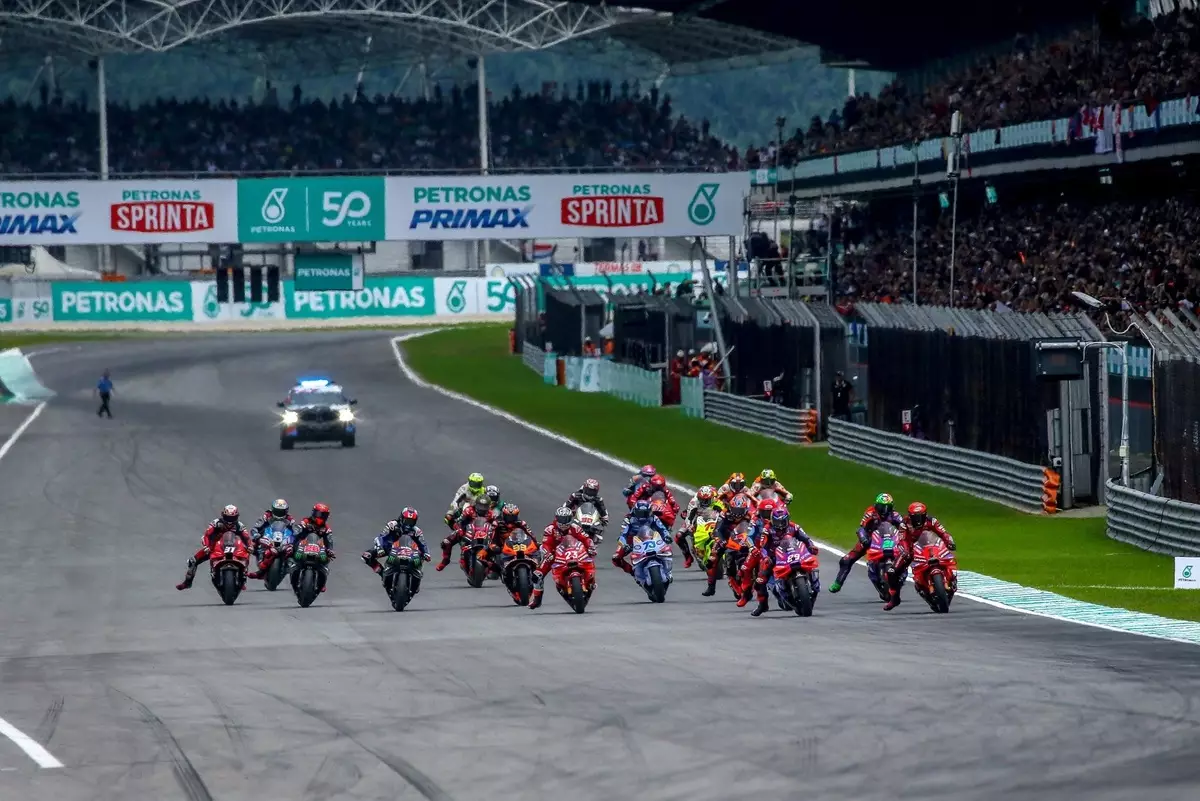The introduction of sprint races in MotoGP during the 2023 season marks a radical shift in the traditional structure of race weekends, an alteration that has not gone without scrutiny. While many in the industry herald the change as a progressive step toward enhancing viewer engagement and race-day excitement, detractors raise concerns about the potential drawbacks, primarily the increased pressure on teams and the diminishing significance of qualifying sessions. This article explores the implications of sprint races on the sport, weighing the benefits against the criticisms leveled by key figures, including former KTM team manager, Francesco Guidotti.
Sprint races were designed to amplify the drama and allure of the racing weekend. By incorporating an additional race, MotoGP aims to attract a broader audience, replicate successful elements observed in other motorsport series, and energize fans with more action-packed content. However, this ambition is met with skepticism, particularly regarding the management of time and resources by the teams. The packed schedule creates a scenario where logistical pressures mount, potentially overshadowing the performance aspects that fans cherish.
Guidotti’s remarks underscore a pivotal concern regarding the current format. He claims that the intensity of the schedule leaves riders and teams in a state of exhaustion, inhibiting their ability to showcase their true capabilities. The condensed timeline of practice, qualifying, and the subsequent sprint pushes everyone involved to their limits. Consequently, the increased demands of the weekend could detract from the quality of racing, rather than enhancing it.
One of the core arguments put forth by Guidotti is the need to rethink the qualifying system. Traditionally viewed as an integral component of race strategy, qualifying now seems secondary to the sprint race, a significant shift from its historical importance. Guidotti proposes that utilizing sprint race results to establish the starting grid for the main event could alleviate some of the stress tied to the qualifying setup. By merging qualifying sessions to create a more cohesive performance evaluation, riders would face less pressure and a clearer pathway to success.
However, this proposition poses its own set of challenges. Abandoning a standalone qualifying format could muddle the competitive landscape and diminish the thrill that comes with head-to-head qualifying battles. The existing structure has evolved over decades, serving to heighten the competitive edge and instill a sense of achievement in riders. Striking a balance between performance evaluation and maintaining the excitement of competition will be crucial if any alterations are considered.
Critics argue that the new sprint race format should be approached with caution, particularly for riders positioned outside the top tier of the grid. According to Guidotti, the performances of riders finishing outside the top nine are undervalued, as they feel little incentive to push for better placements. This lack of motivation further complicates the competitive dynamic, where finishing positions yield negligible consequences for starting positions in the grand prix.
The implications of this viewpoint extend beyond the weekend format; they touch on the essence of competitive racing itself. If positions do not matter, then the stakes diminish, and the adrenaline that fuels both athletes and spectators could wane. A reformulation of how sprint results factor into the larger narrative of a race weekend could foster a more level playing field and invigorate the competition.
As MotoGP grapples with the multifaceted impact of sprint races, stakeholders must engage in meaningful dialogue to refine the series’ approach. While exhilarating for fans and potentially beneficial for viewership, these changes must not come at the expense of the sport’s foundational elements, such as competitiveness and team strategy.
Francesco Guidotti’s insights cast a critical light on the current state of play and suggest pathways to enhance the existing framework. Ultimately, it is essential for MotoGP to evaluate these perspectives and remain agile in its evolution, ensuring that the sport remains vibrant, compelling, and true to its competitive spirit.

